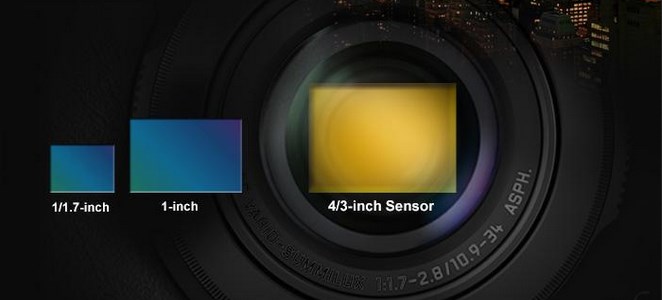Anyone searching for the best enthusiast compact will surely have Canon G7X vs Sony RX100 vs Panasonic LX100 on their minds.
Cameras such as the S Series from Canon and the LX series from Panasonic had 1/1.7″, while a typical compact has 1/2.3″, so the 1″ sensor in Sony’s RX100 was quite a big deal and mostly remained the king of compacts for two years.
other manufacturers remained relatively stagnant in regards to sensor size.
Sony even released two more “versions” of their RX100 — the RX100M2 and the RX100M3, both of which improved upon the original RX100M1 design, while other manufacturers remained relatively stagnant in regards to sensor size.
Enter stage right, after two long years, Canon G7 X. Does it have enough juice to topple the RX100M3? Or is it too little too late?
Canon G7X review shooting modes
While I don’t use these specialized shooting modes often, the G7X has them for those who like playing around with different interesting effects.
Canon G7X includes a scene mode which allows you select from portrait, smart face detect, star mode, nightscene, underwater, snow and fireworks. Selecting these will have the camera automatically choose the best settings for these particular situations and can be great for those who don’t like to fiddle a lot with settings.
One that I do find useful on occasion is HDR (hi-dynamic range) mode which will take several shots at different exposure levels in extremely rapid succession and then combine them for a well balanced image. This can be a useful way to catch a shot with contrast extremes.
There is also toy-camera, miniature, fish-eye, nostalgic, background defocus, super vivid and poster effect.
In most shooting modes you can also select DR function which will help with correction of overexposed areas, and shadow correction which helps with bringing detail to shadowed areas.
An ND-filter (neutral density filter) mode is included which is excellent for taking shots of waterfalls where you want to leave the shutter open for longer than usual, but not take in too much light and overexpose the entire photo.
Auto-ISO is a huge plus and allows you to set aperture and timing to your preference, while the camera chooses the best ISO for a proper exposure.
Canon G7X review sensor
The sensor in the Canon G7X is a 1” 20.2MP sensor. This is a significant step up in size from Canon’s previous enthusiast compact, the Canon S120, which had a 1/1.7” sensor.

In the image above, we see the typical pocket enthusiast camera sensor size of 1/1.7″. This is the sensor size in the Canon S series, the Panasonic LX7 and the Olympus XZ-2. The next size up, huge compared to the 1/1.7″ is the size in the Canon G7 X and Sony RX-100 line. The 4/3 sensor size is what will be used in Panasonic’s upcoming LX100. The smallest size of 1/2.3″, which is common for a compact, is not shown here.
It’s interesting to note that most have speculated Canon is using the same sensor as what’s in the Sony RX100 line. While Sony quotes their sensor as being 20.1, Canon quotes it as 20.2. So perhaps it isn’t the same sensor, or Canon has decided to round up. Whatever the case, the big news is the big (for a compact) sensor.
The megapixel count is of far less interest to me, but it does mean that those who are doing very large prints and/or big crops will benefit from the high MP count.
In stark contrast to the G7X, Panasonic has gone with “less MP are better”
The war wages on in the “more MP are better” battle, but most experts agree that for gaining detail in good lighting, more megapixels are better, while for low-light quality shots, more light per pixel will be of benefit. In stark contrast to the G7X, Panasonic has gone with “less MP are better”, and released a 16MP 4/3 sensor enthusiast compact. It’s also worth noting that Apple has recently released their iPhone 6 with 8MP as opposed to 13MP/16MP of flagship competitors.
Canon G7X review LCD display
The display on the G7X is 3”@1MP IPS, which makes it fairly retina and produces excellent color, contrast and viewability from all angles.
a big, glaring miss on the Panasonic LX100 and all Sony RX100’s
This is something that is a big, glaring miss on the Panasonic LX100 and all Sony RX100’s. To see it missing from the Panasonic and Sony $900 and $800 cameras in 2014, frankly is astonishing, and Canon was smart enough to include it in the Canon G7X.
The display is rotatable which comes in very handy, not so much with the taking of selfies, but when taking shots lower than eye level, which allows you to rather than bend, kneel or scrunch down, simply to lower the camera and rotate the LCD up so you can view it from the top.
Canon G7X review lens
In addition to the touchscreen, the G7X zoom is another reason enthusiasts are looking hard at the G7X. While the latest iteration in the RX100 series has a 3x zoom lens, the Canon G7X has included a 4x zoom lens that can shoot at f2.8 even when fully zoomed in at 4.2x tele.
We will have a comparison of the difference between 3x and 4x zoom coming up later in the review.
The great thing about the extended zoom in comparison to the RX100M3 is not only in bringing the shot optically closer, it also allows for a significant difference in creating “bokeh”, that is the creamy blur you see in the background of portrait and product shots. We will have a comparison of the difference between 3x and 4x zoom coming up later in the review.
For those interested in the technical details of the Canon lens, the G7X glass is composed of 11 elements in 9 groups; 1 double-sided aspherical, 1 single-sided ultra-high refractive index aspherical, 1 single sided aspherical, 1 ultra-low dispersion. Super-Spectra-coated. 8.8 (W) – 36.8 (T) mm (35mm film equivalent: 24-100mm).









